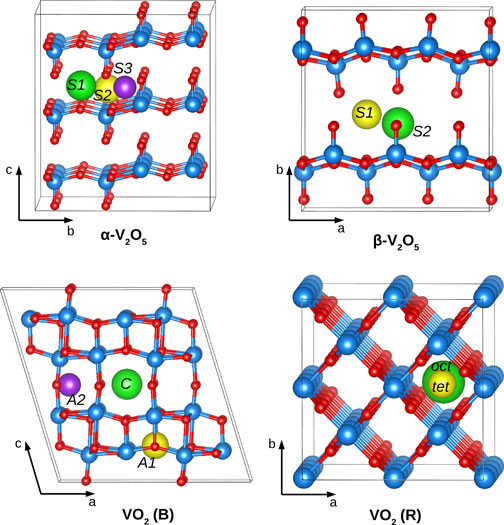No CrossRef data available.
Published online by Cambridge University Press: 09 October 2017

Four different vanadium oxide phases [α-vanadium pentoxide (V2O5), β-V2O5, bronze-type vanadium dioxide [VO2(B)], and rutile-type VO2 [VO2(R)])] are investigated from first principles as potential electrode materials for potassium (K) ion batteries. Specifically, insertion energetics and diffusion barriers are computed. These phases are known as promising cathode materials for other types of metal ion batteries. Our results show that the metastable β-V2O5 provides the lowest (strongest) insertion energies for K and the lowest diffusion barriers compared with orthorhombic α-V2O5, VO2(B), and VO2(R). While three of these phases show energetically favorable potassiation and relatively small diffusion barriers, VO2(R) is predicted to be incapable of electrochemical K incorporation.